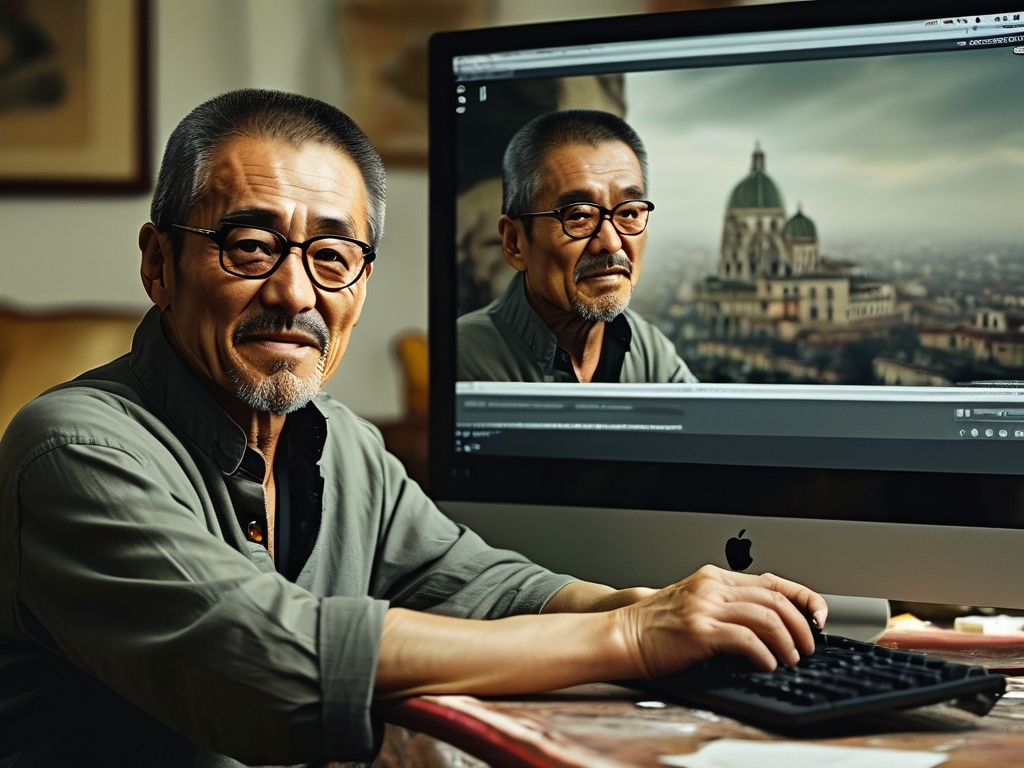Zhang Yimou, one of China’s most celebrated filmmakers and visual storytellers, has long been synonymous with grand cinematic spectacles, vibrant color palettes, and narratives deeply rooted in Chinese culture. From his early works like Red Sorghum (1987) to blockbusters like Hero (2002) and House of Flying Daggers (2004), Zhang’s films are a masterclass in blending artistry with technical precision. In recent years, however, his projects have expanded beyond traditional cinema to include large-scale stage performances, immersive exhibitions, and even digital interactive experiences. This shift has sparked curiosity about the creative minds behind these innovations—particularly the role of interaction designers in his team. But who exactly is the interaction designer collaborating with Zhang Yimou, and how do they contribute to his visionary projects?

The Evolution of Zhang Yimou’s Artistic Endeavors
Zhang Yimou’s career has undergone a dramatic evolution. While he initially gained fame for his emotionally charged dramas and historical epics, the 2008 Beijing Olympics opening ceremony marked a turning point. As chief director, Zhang orchestrated a globally televised spectacle that fused cutting-edge technology with cultural symbolism—think synchronized LED displays, aerial performances, and holographic projections. This project hinted at his growing interest in multidisciplinary collaborations, where technology and interactivity became central to storytelling.
Subsequent ventures, such as the Impression series of outdoor live performances (e.g., Impression Lijiang, Impression West Lake), further blurred the lines between theater, cinema, and experiential design. These shows rely on real-time audience engagement, dynamic lighting, and interactive stage elements, raising questions about the specialists behind these technical feats.
The Role of Interaction Design in Zhang’s Work
Interaction design, at its core, focuses on creating meaningful connections between users and systems. In the context of Zhang’s projects, this translates to designing experiences where audiences don’t just passively watch but actively participate or feel immersed in the narrative. For example, his 2021 multimedia exhibition ”Light and Shadow: The Art of Zhang Yimou” incorporated motion sensors, projection mapping, and responsive soundscapes to let visitors “interact” with scenes from his films. Such projects demand a fusion of artistic vision and technical expertise—areas where interaction designers play a pivotal role.
Uncovering the Collaborators
Despite Zhang Yimou’s prominence, details about his core creative team remain relatively private. Unlike Hollywood productions, where credits are extensively documented, Chinese media often emphasizes the director as the singular visionary. However, through interviews and industry reports, a few key collaborators have emerged:
- Fan Yue – A longtime partner, Fan Yue has co-directed several Impression series performances. While not an interaction designer per se, his work integrates choreography, stage mechanics, and audience flow—elements critical to interactive experiences.
- Blackbow Creative Team – This Beijing-based studio, specializing in digital art and immersive tech, has collaborated with Zhang on exhibitions. Members of this team, including lead designer Wang Wei, have discussed developing interactive installations for Zhang’s projects.
- Xiaotong Li – A tech-art innovator, Li’s name surfaced in connection with Zhang’s 2023 augmented reality (AR) project ”Echoes of the Forbidden City.” Her expertise in AR storytelling aligns with Zhang’s push for audience-driven narratives.
Notably, Zhang’s approach seems to prioritize collective effort over individual recognition. In a 2022 interview, he stated, “Modern art is no longer about one person’s genius. It’s about how a team translates a shared vision into something that moves people.” This philosophy might explain why no single “interaction designer” is publicly credited. Instead, specialists in UX/UI, motion capture, and software engineering likely work under the guidance of Zhang and his core creatives.
Case Study: ”Echoes of the Forbidden City”
This AR-driven exhibition, launched in Beijing’s Palace Museum, offers insights into how interaction design shapes Zhang’s work. Visitors use handheld devices to unlock hidden stories about artifacts, with the environment reacting to their movements. For instance, touching a virtual dragon robe triggers a historical reenactment projection. The project required:
- User Journey Mapping: Ensuring intuitive navigation through physical and digital layers.
- Sensory Integration: Balancing visual, auditory, and tactile feedback to avoid overwhelming users.
- Cultural Authenticity: Aligning interactive elements with historical accuracy—a hallmark of Zhang’s style.
While Xiaotong Li’s team handled the AR interface, Zhang oversaw the narrative structure, proving that his role extends beyond traditional directing into curating holistic experiences.
: The Invisible Hands Behind the Magic
Zhang Yimou’s embrace of interaction design reflects a broader trend in global entertainment—audiences crave participation, not just observation. Yet, the absence of a publicly named “interaction designer” in his credits underscores a cultural and industry nuance: Chinese media often elevates the director as the auteur, while collaborators remain unsung heroes.
As Zhang continues to push boundaries—whether through AI-driven films or virtual reality operas—the demand for skilled interaction designers in his orbit will only grow. Their work, though invisible to the public eye, is integral to transforming his grand visions into tangible, awe-inspiring realities. For now, the answer to “Who is Zhang Yimou’s interaction designer?” lies not in a single name but in the collective brilliance of a team dedicated to redefining storytelling in the digital age.


